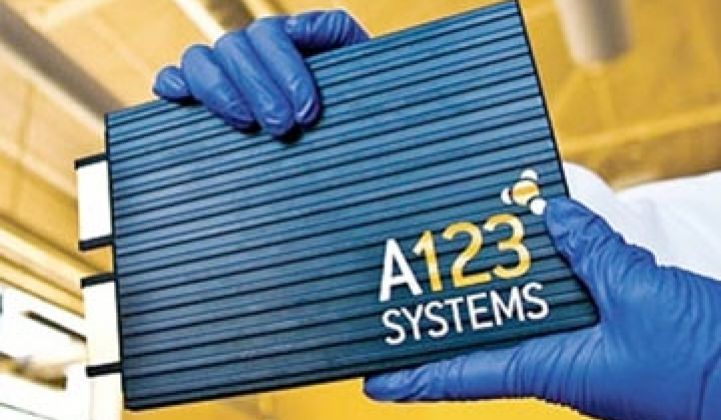CORRECTION-- See below.
Lithium Energy Japan, a Mitsubishi joint venture, decided in April to build a new lithium-ion battery factory in Japan. The plant is to supply 50,000 cars.
Several months earlier, A123 Systems said it would use a $249 million government grant to more than double its manufacturing capacity. The company's total 760-megawatt hours of production will be enough to supply 320,000 hybrid vehicles.
A week later, EnerDel of Indianapolis unveiled its own plan to more than double U.S. production. The cost: $237 million.
Makers of lithium-ion batteries are rapidly expanding their factories in anticipation of a ballooning market for electric cars. The trouble is, none of them can be sure what the demand will be.
Car makers have big plans for electrics. But it could take years for the industry to reach the production levels battery makers appear to be preparing to supply. General Motors, for instance, will make 20,000 Chevrolet Volts in 2011 and increase the production run to 30,000 in 2012.
Nissan has 17,000 pre-orders for its electric Leaf in the United States, suggesting that production is already sold out for the year. The company will accelerate this modest start with ambitious plans for 500,000 cars worldwide starting in 2013.
For many battery makers, the consequence of long-term oversupply could be catastrophic. A flooded market will push down prices and send profits tumbling. Start-ups with innovative technology could find it hard to survive.
With electric cars starting to reach consumers later this year, the supply-demand debate was a key focus of the first day of the Plug-In 2010 conference in San Jose. The conference brought together some of the leaders of the business: A123, LG Chem's Compact Power, Electrovaya, Applied Materials and the Johnson Controls-Saft joint venture - and there was little agreement.
At this point, demand is not clear, says Roger Lin, director of product marketing at A123. The adoption of electric cars may be faster than the pessimists believe.
At A123, the company's capacity is sold out through 2013 and 2014, Lin said.
On the other hand, some projections suggest worldwide lithium-ion battery supply could be three times greater than demand. "The upsurge in domestic manufacturing has been a surprise for us," says Kevin Chen, director of business development at manufacturing-equipment supplier Applied Materials.
Recovery Act funds have played a big role in the build-out. One company to benefit is Johnson Controls-Saft. Without stimulus funds, the company would have built a factory in Asia, says John Schaaf Jr., vice president of market development at Johnson Controls.
John Gartner, a senior analyst at Pike Research, says oversupply is possible. He projects that by 2015 the installed price of battery systems (including thermal management gear and other finishing equipment) will be cut in half.
There is the chance for at least a temporary glut, he says. "I think there is a potential for that."
CORRECTION: Earlier we reported that A123 had 360 megawatt hours of capacity. That came from a January annoucement. A123 expanded capcity in May.
While we believe Roger Lin stated that capacity was sold out through 2013 and 2014, Andy Chu, vice president of marketing and communications at A123 added: "Any statement that A123's battery production capacity is sold out through 2013 and 2014 is inaccurate. We are sold out through this year and into early 2011."



